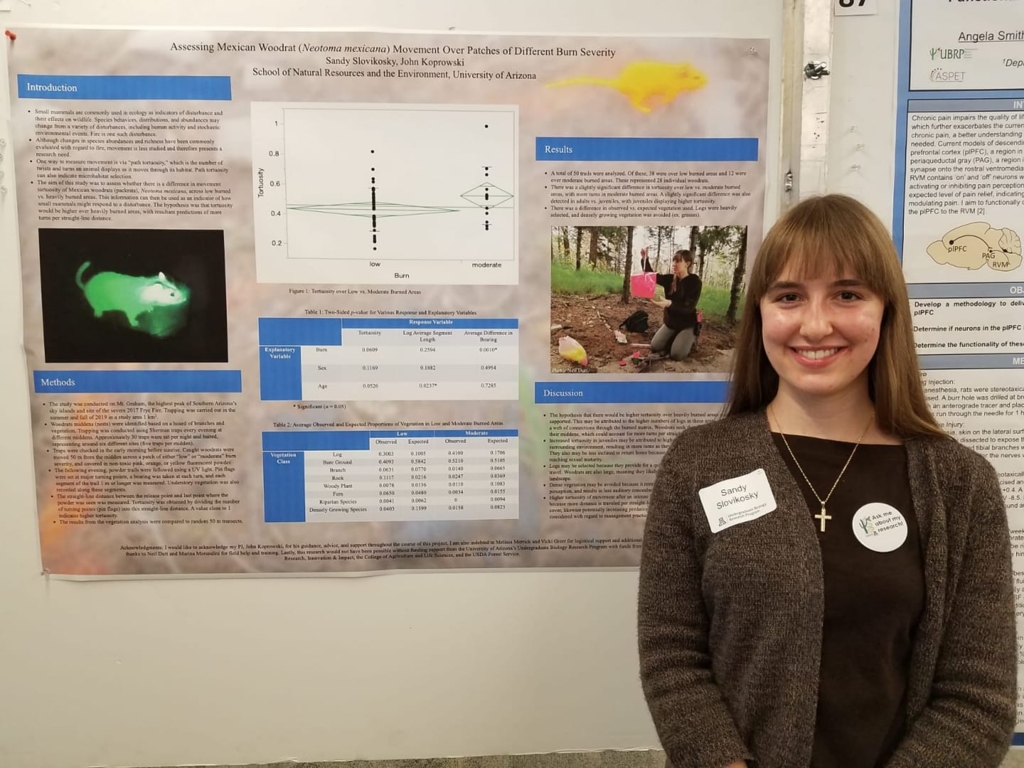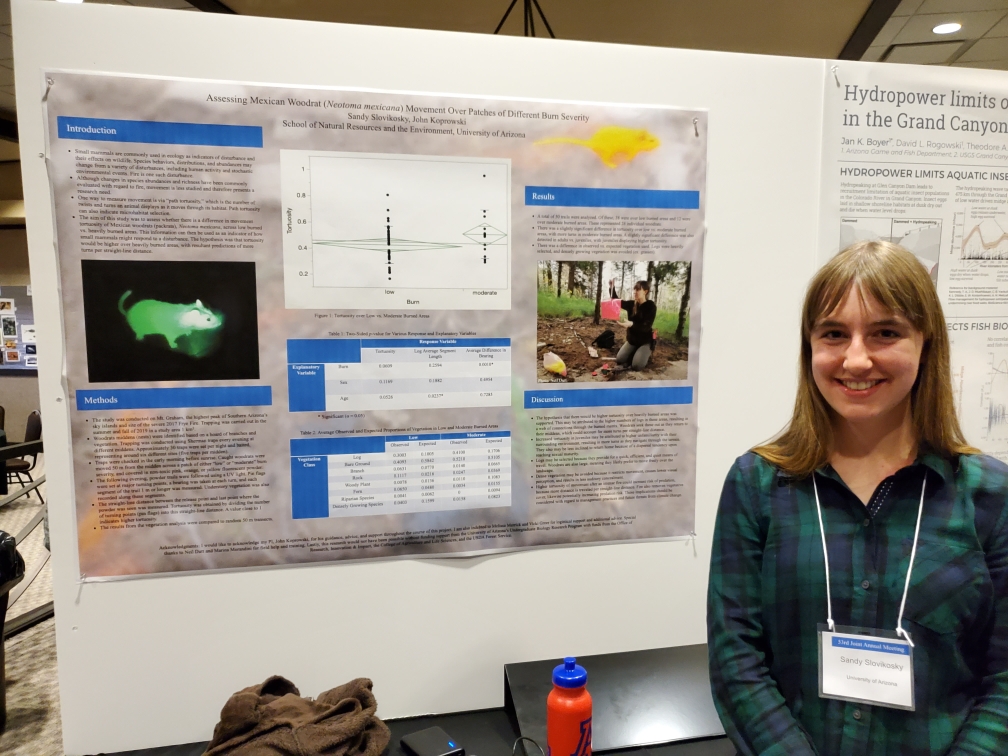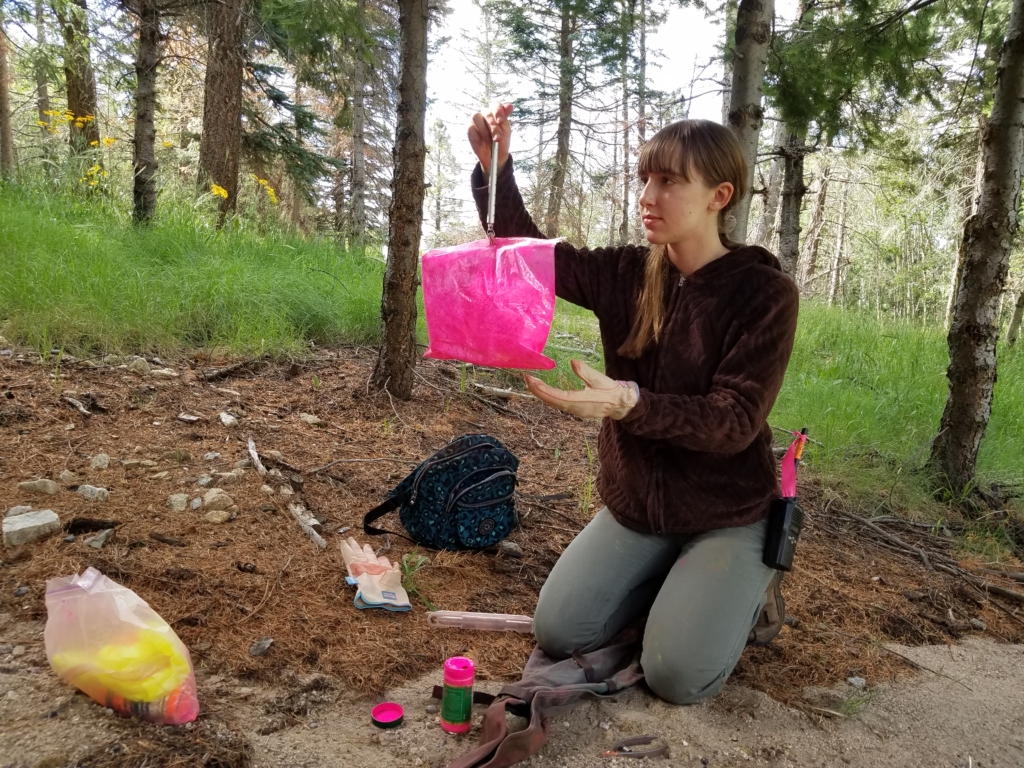
Link to Peer-Reviewed Publication
When I discovered I had been accepted into the University of Arizona’s Undergraduate Biology Research Program (UBRP) for the summer of 2019, I was very excited. UBRP is a program in which undergraduates are paid to conduct biological research under the guidance of a mentor. Students work full-time during the summer and may continue part-time during the semester if they so choose. Considering I was already part of Dr. John Koprowski’s Conservation Research Laboratory as an undergraduate research assistant, I decided to stay with his research group for the program. What an adventure it was!
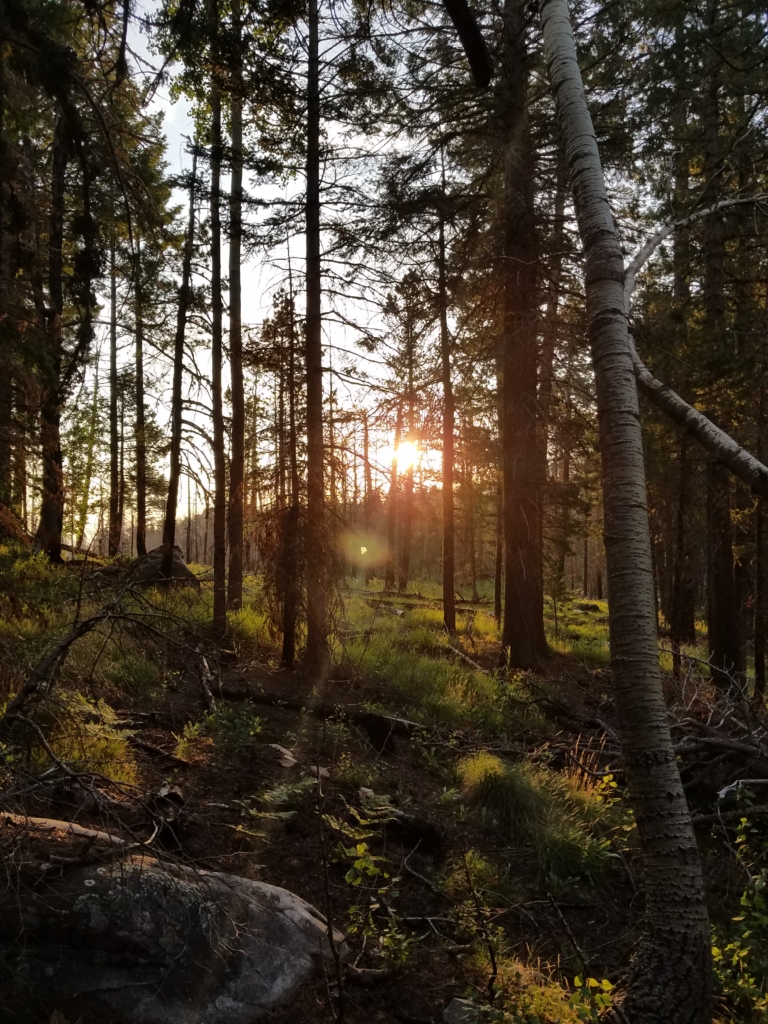
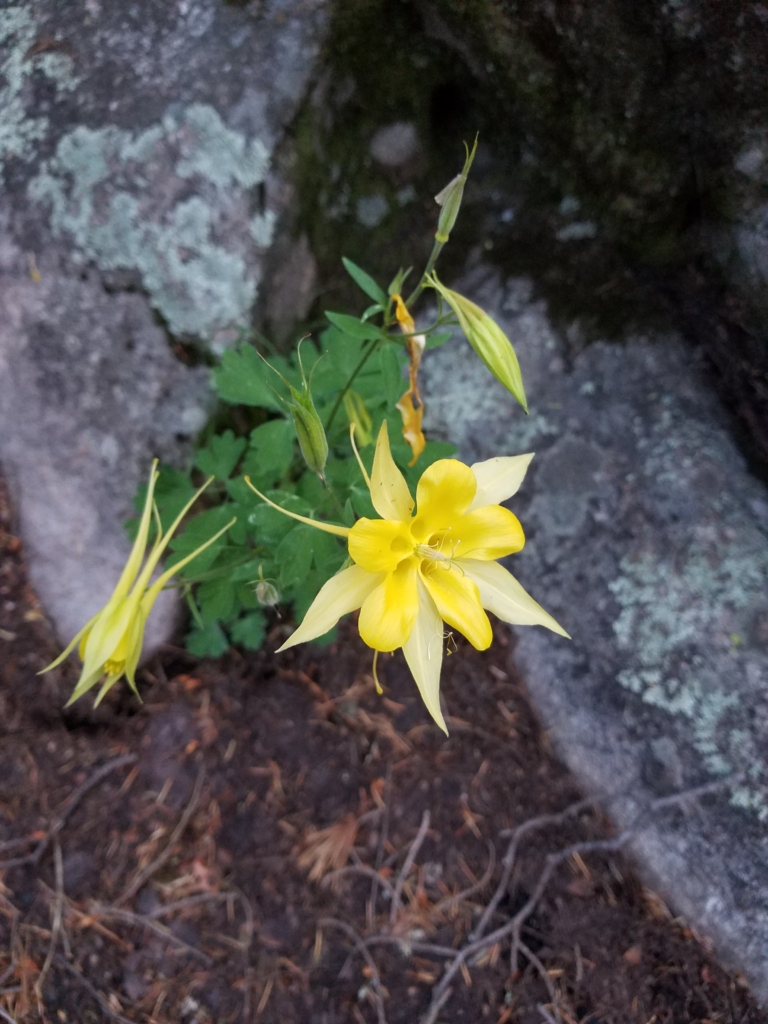
My research topic came from several different avenues of ideas. First, animal habitat use, particularly in the face of fragmentation, is a topic that has fascinated me for years. Second, I love mammals. Third, the Koprowski lab’s core project, monitoring the endangered Mt. Graham red squirrel, occurs on the mountain of the same name. Mt. Graham is the highest peak of southern Arizona’s “sky islands,” a term that describes isolated mountains containing species not found anywhere else. The climate and species composition at the top are radically different from the lowlands. Mt. Graham has experienced a number of fires over the past several years, the most recent one prior to my project being the Frye Fire from 2017. This fire of over 19,400 hectares burned some areas more severely than others, leaving a patch mosaic of high, moderate, low, and unchanged burn severities. Thus, I decided to study how packrats (known as woodrats in the scientific community) move over these patches of different burn severity using fluorescent powder tracking. Specifically, I was interested in their path tortuosity: does burn severity affect whether they run in a relatively straight line or with more twists and turns? I additionally assessed their microhabitat use. The larger scope of this work falls within the field of disturbance ecology. Small mammals, though often underappreciated, can serve as important indicators of effects that a disturbance (fire, flood, insect outbreak, etc.) might have on an ecological community. Plus they are often cheaper to study than larger mammals (and super cute!). The species I worked with is the Mexican woodrat, Neotoma mexicana.
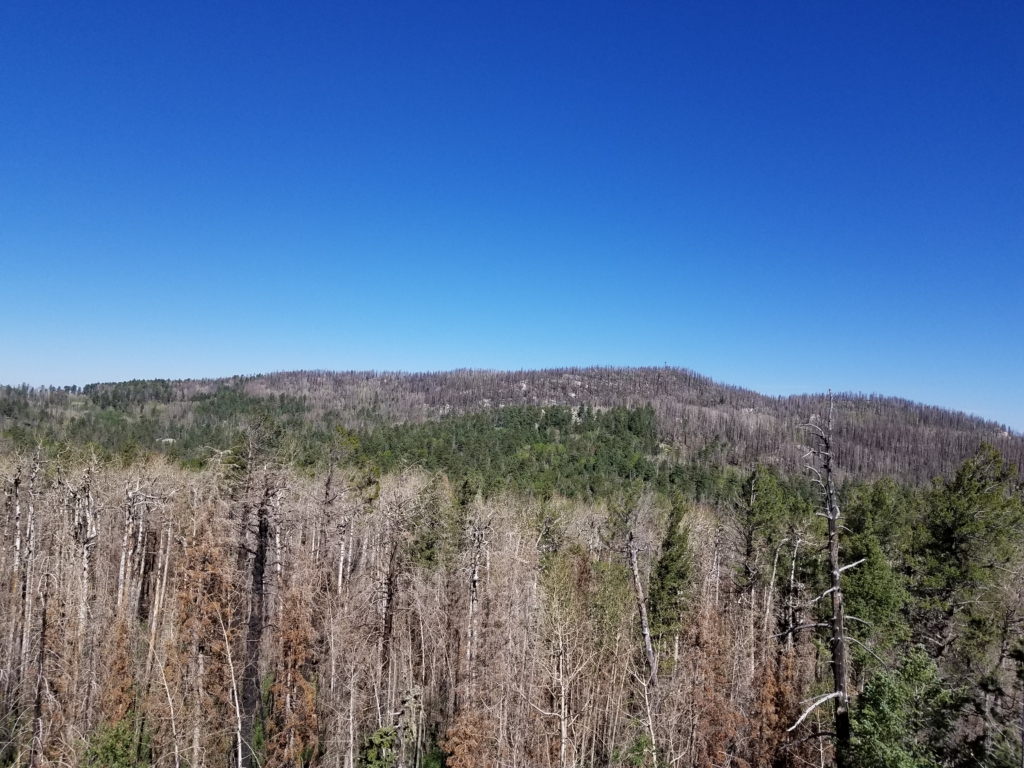
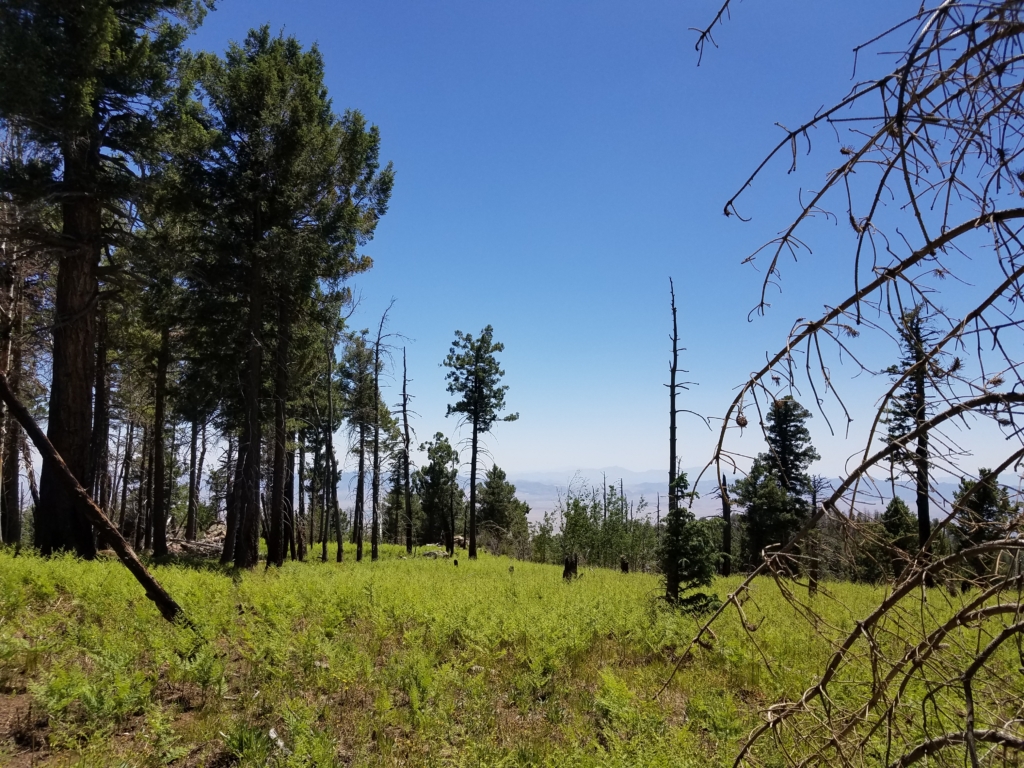
When I conducted my study, small mammal movement pre- and post-disturbance was grossly underrepresented in the scientific literature, which mainly focused on changes in abundances of different species before and after a disturbance. Thus this was a unique idea! As mentioned, I used non-toxic fluorescent powder, which glows at night under a UV light, to track the packrats. When the animals are thoroughly coated, they leave behind a trail that may be followed after dark. The powder comes in a variety of colors; I used pink, orange, and yellow (which looked green at night). Because the substance is extremely fine, it gets on everything. Sometimes I thoughtlessly touched my hair with my messy hands, so when I returned to camp, it looked as though I had colored dye in my hair! My clothes and datasheets glowed too.
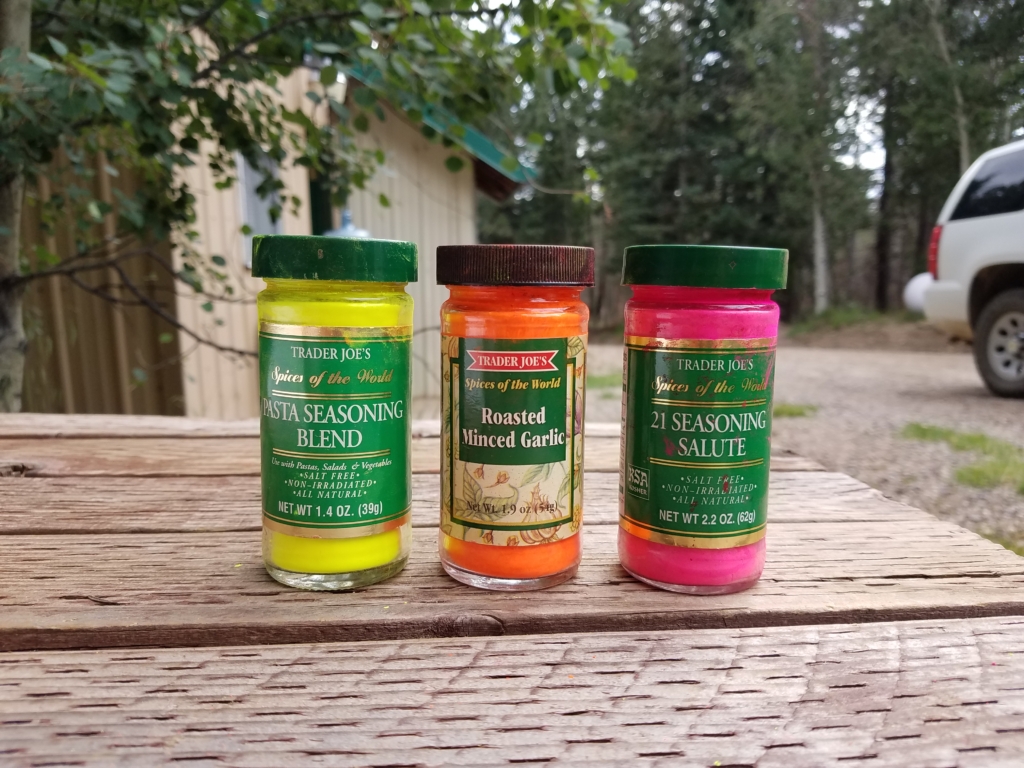
To carry out my research, I first had to find the packrat nests. Anyone with a packrat problem at their house knows this isn’t a challenge! Their nests, or middens, may be identified based on a pile of branches and debris, a bed of fecal pellets, and a distinct smell. When I found a nest, I marked it by tying flagging tape around the trunk of the nearest tree and marking the location in an app called “Avenza.” Avenza is EXTREMELY useful for any field researcher and allows one to download a PDF version of a map onto their phone. Obviously not only does it prevent one from getting lost, but it also allows for setting waypoints and measuring distances, among a host of other options. My first week on the project was solely comprised of searching my study site (~1.5 km2, elevation ~ 2,900 meters) for nests, though in subsequent weeks I continued to search new areas in my spare time. The more animals, the larger the sample size, the better!
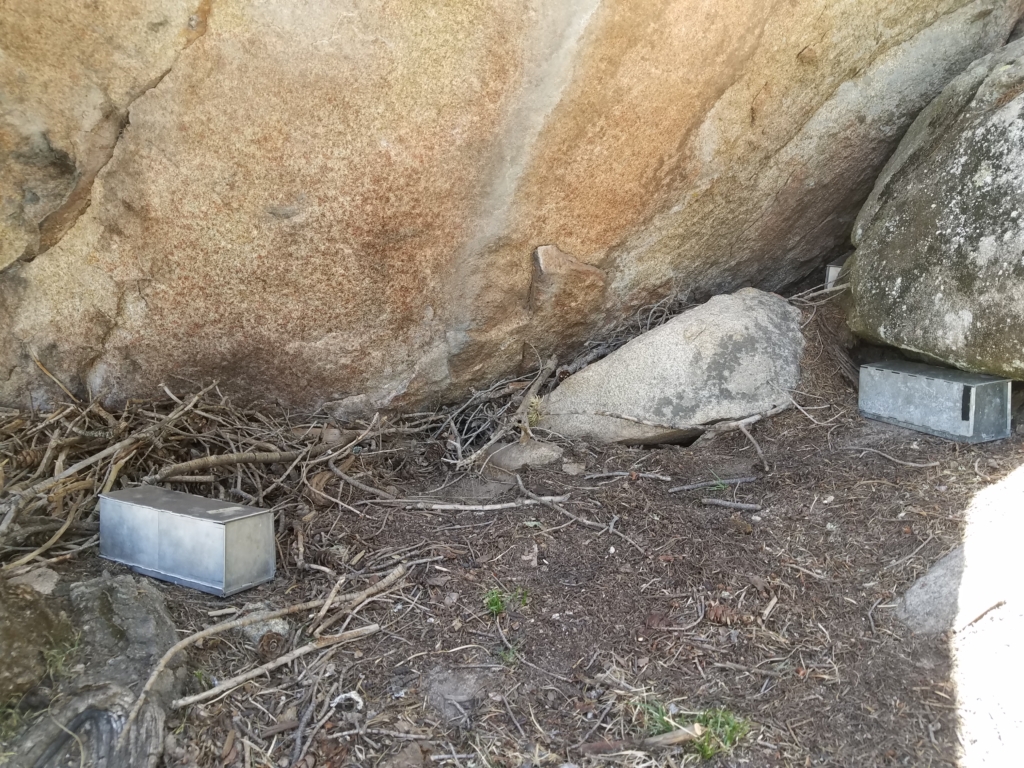
The next step was trapping at these nests to catch and tag the rodents. In the evening, just before sunset, I went out and set Sherman aluminum folding traps at my marked locations. On average I trapped at five nests per night, and six nests total, equating to around 30 set traps per night. Sometimes that number could be as high as 45 with nine sites. I baited them using peanut butter oats (completely irresistible to small mammals!). Early in the morning, between 3:30 and 5:00 when it was still dark, I got up and drove to my study sites. Upon arriving, I checked the traps and released any non-target species. These included chipmunks, voles, and deer mice (sooo many deer mice!). If I caught a packrat, it was usually pretty obvious given the heavy weight of the trap together with a stinky smell. I then pulled out my Avenza app, drew a random distance of 50 meters away from the nest, added a waypoint, and headed in that direction. I used 50 meters because this distance is supposedly larger than their home range size, indicating how they move over unfamiliar ground instead of through familiar territory.
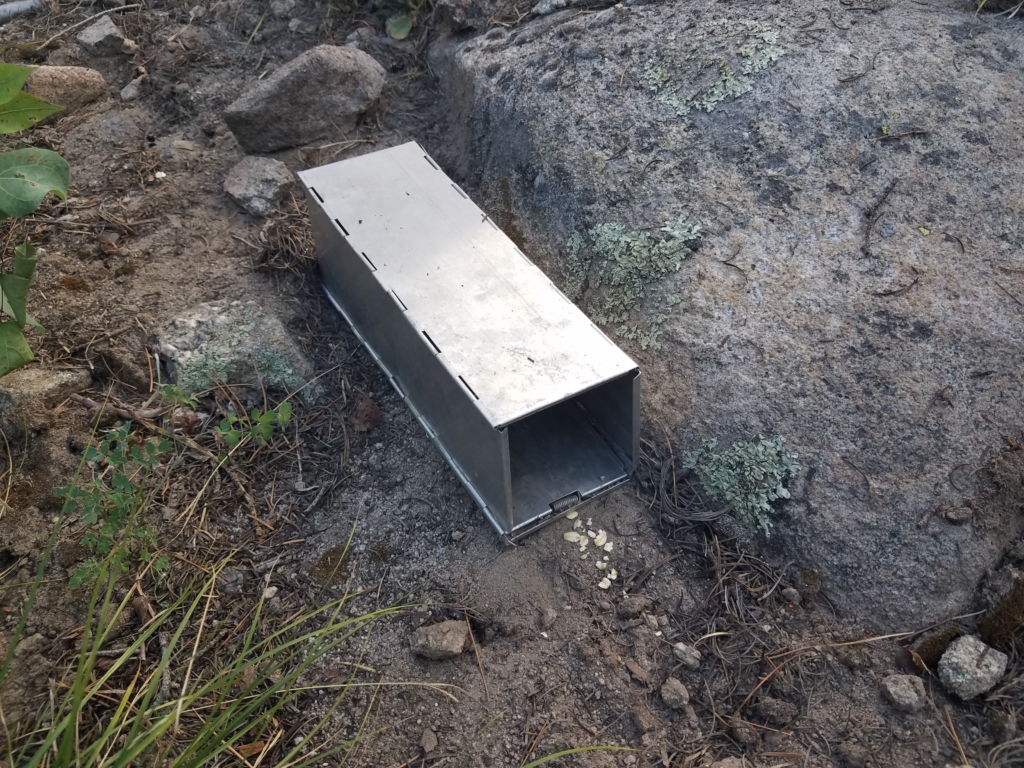
Once I arrived at my set distance located 50 meters away, I transferred the animal from the trap to a cloth funnel cone. This simple piece of equipment makes handing small mammals easy and convenient, especially for large, aggressive rodents like packrats. It is a cloth in the shape of a cone with a Velcro strip on the side. The tip has a small air hole for breathing (think of a frosting cone), whereas the Velcro allows the researcher to access different parts of the animal’s body while minimizing stress. Previously I had been holding packrats by the scruff of their necks, which was not only more stressful for the animal, but for me as well! During this step of the process, I determined the sex of the rodent and gave it an ear tag with a unique identification number. I then transferred it to a plastic bag and weighed it using a Pesola spring. Lastly, I added the powder through a small opening in the top of the bag, gently shook to completely cover the animal, and released it in the direction of its nest.
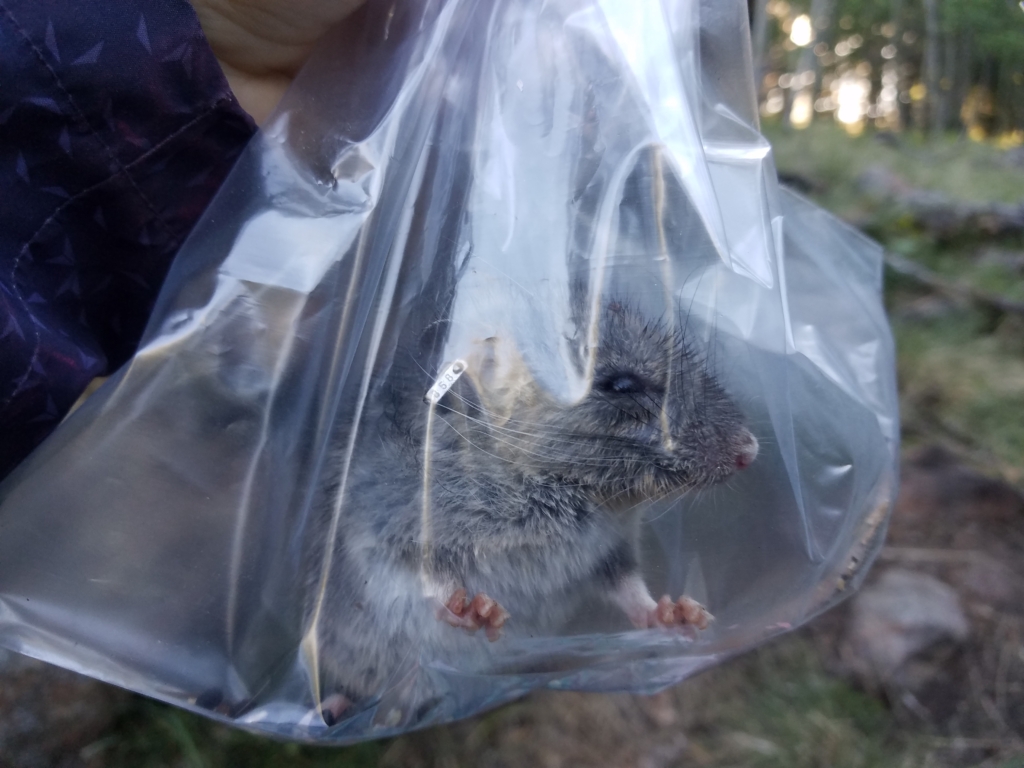
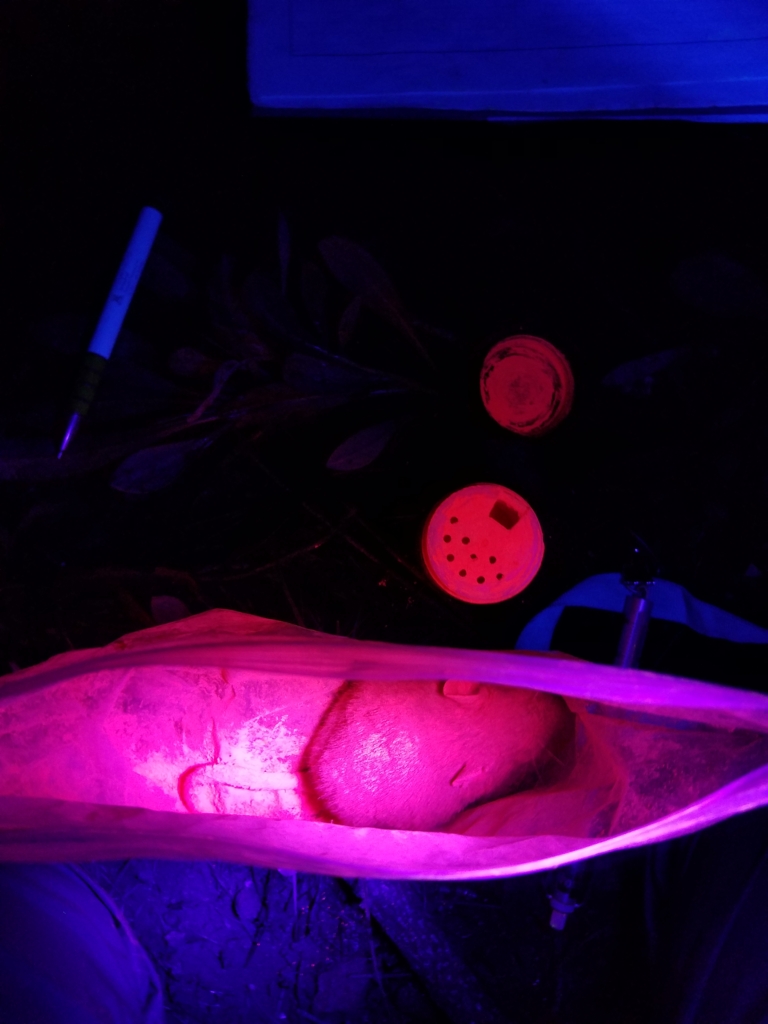
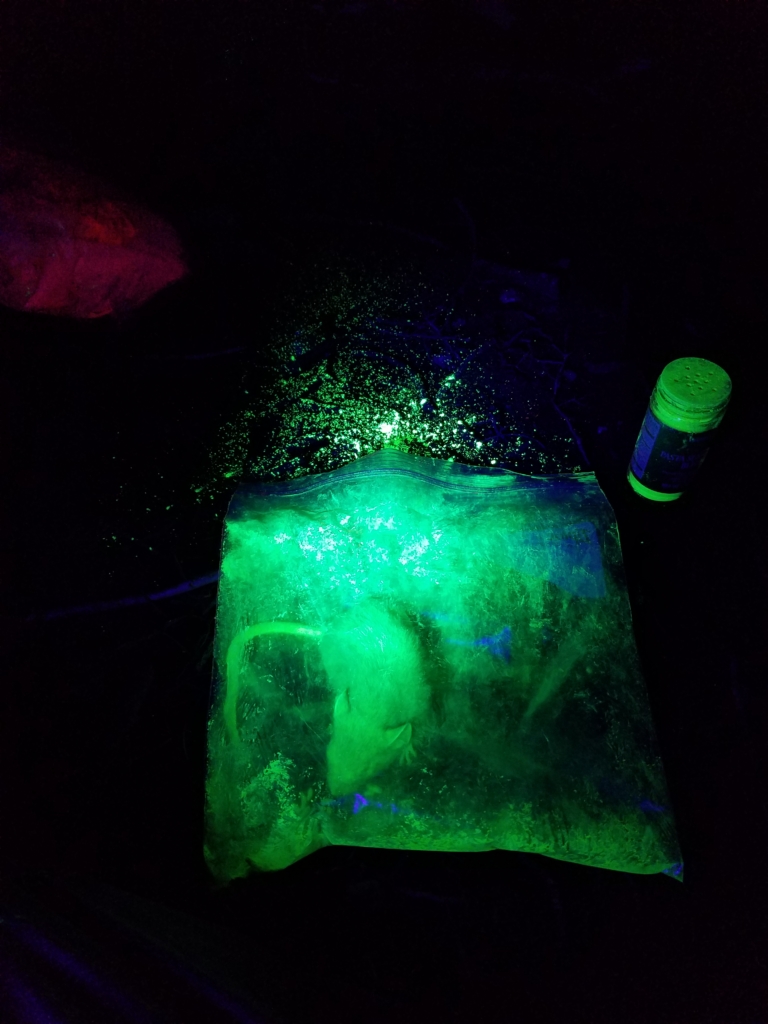
Come evening, after setting traps for the following day, I drove back to the sites where I had caught a packrat that same morning. Using the UV light, as darkness fell, I followed the powder trail and marked each major turning point using pin flags, here defined as a change greater than 20°. Once finished, I headed to the next site. These could range anywhere from one to seven trails per night. Some were rather easy to follow, whereas others sent me crawling under fallen trees, pushing through thick shrubs, and climbing up large rock outcrops (a flashlight and headlamp were my treasured possessions!). Needless to say, upon going to bed I had twigs in my hair, ash all over my clothes, and dirt on my face. Combined with not showering Monday-Friday at camp made for an interesting situation.
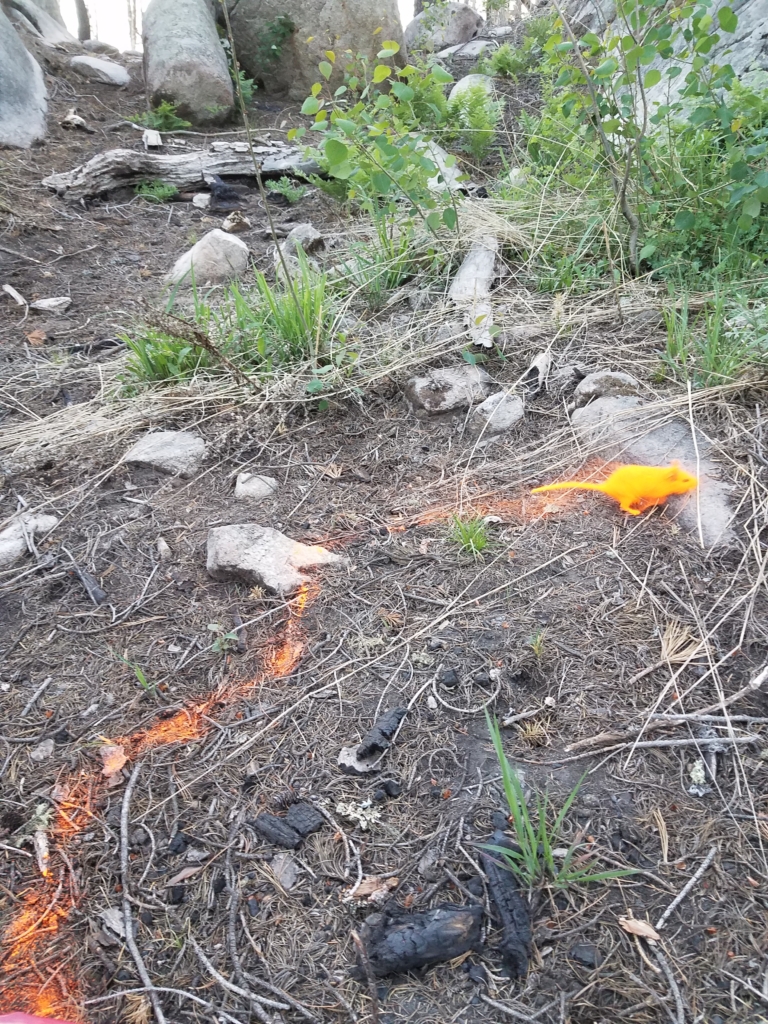
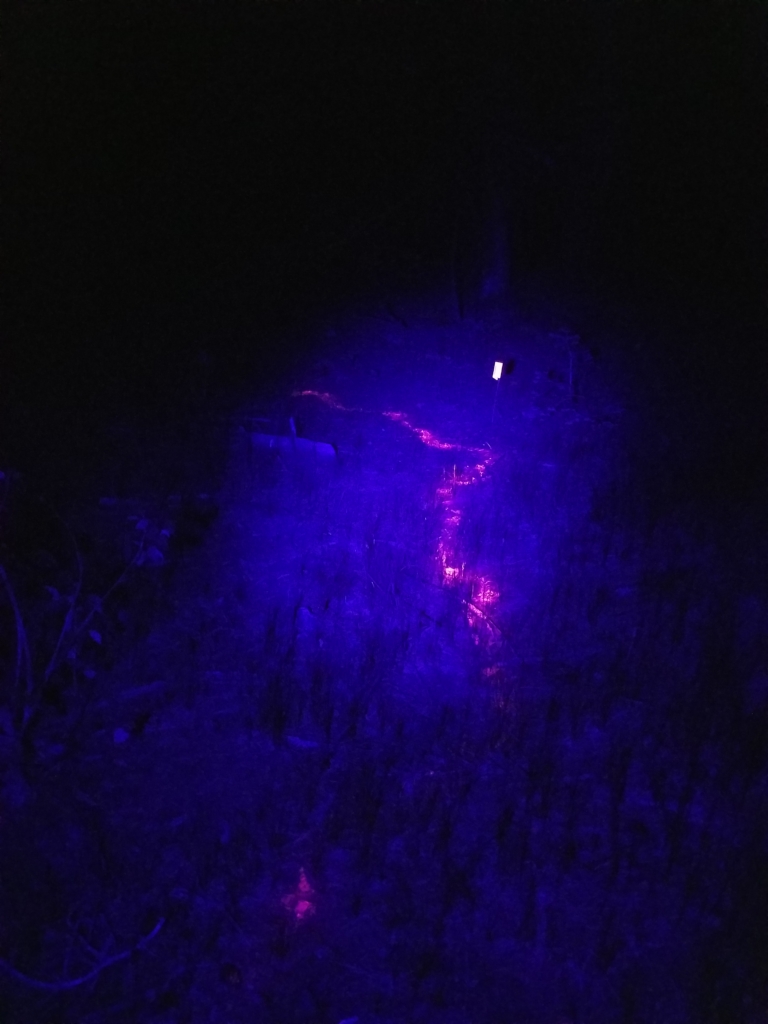
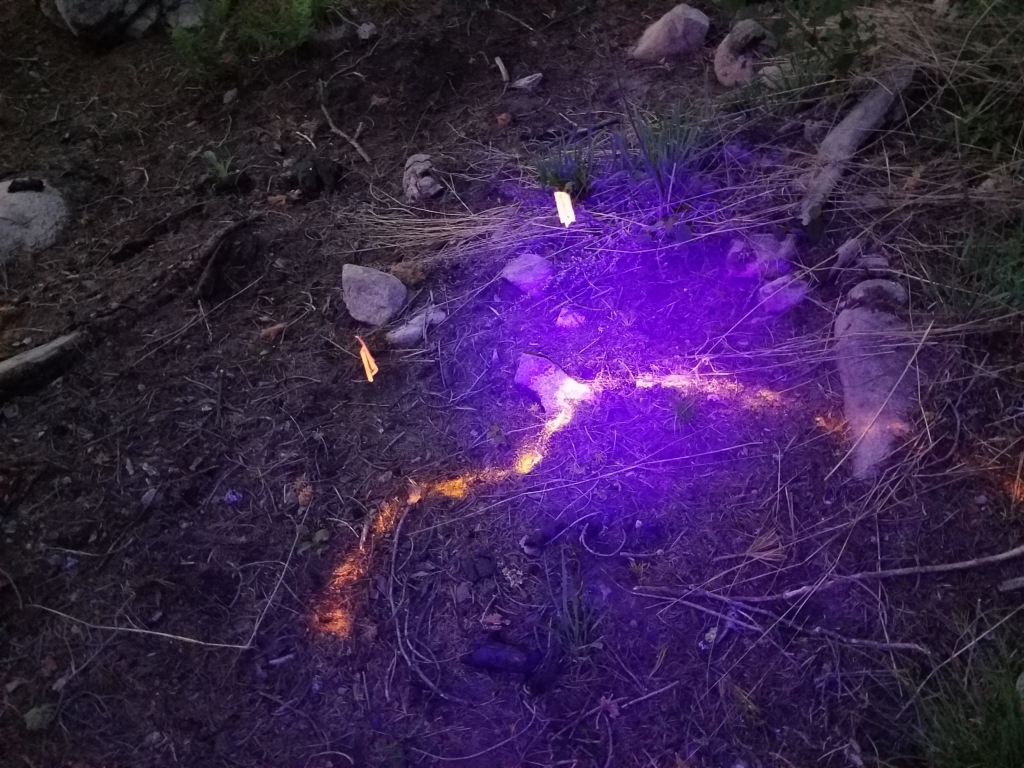
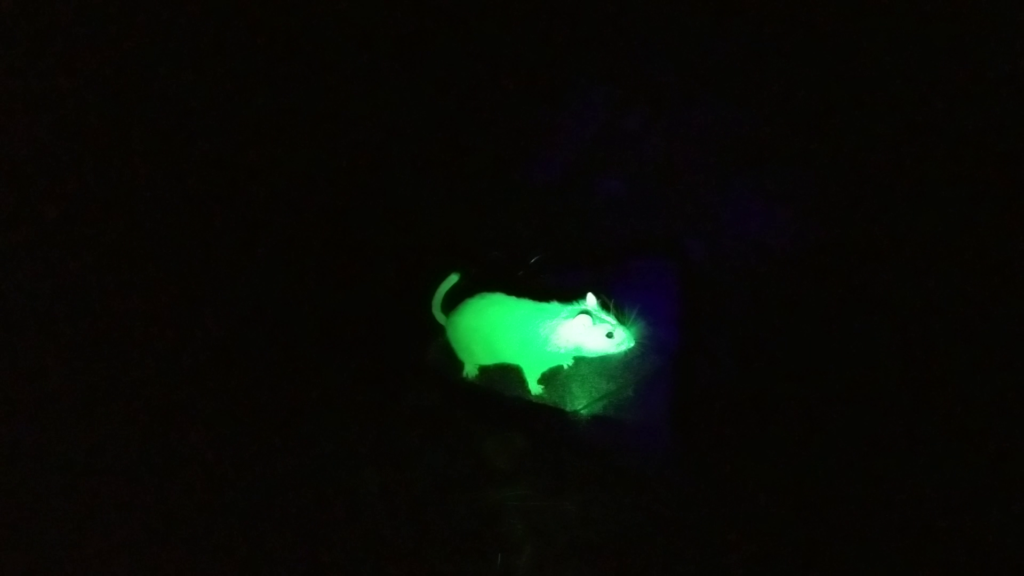
Most of what I’ve described so far occurred at night, dawn, and dusk (my internal clock basically reset itself…). During the day, I analyzed the powder trails I had marked with pin flags. Together with a measuring tape and compass, I visited each trail and measured the segment lengths together with their bearing, a value ranging from 0 to 360°. This data came in handy later when I reconstructed the movement paths in a geographic information system (see my post GIS Habitat Suitability Model). The second component of analyzing the trails included noting vegetation along the packrat’s path. I created eight original categories, though ended up condensing those into five for analyses. These were logs, rocks, bare ground, dense vegetation (grasses, ferns, etc.), and branches. When this was finished, I removed the pin flags.
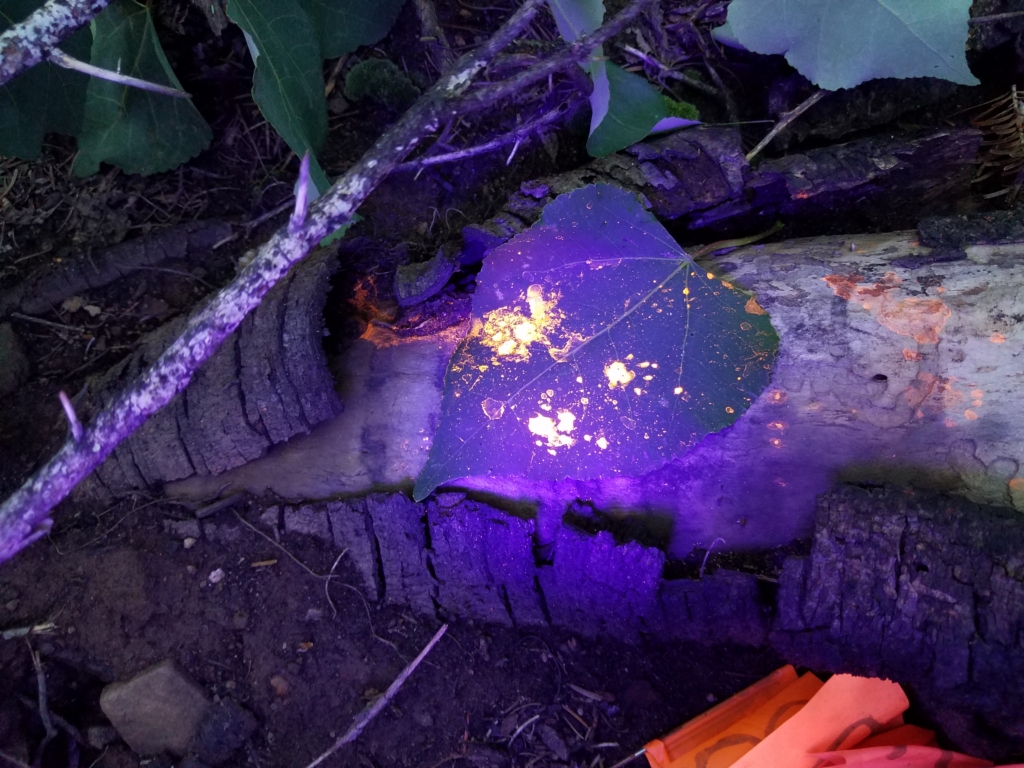
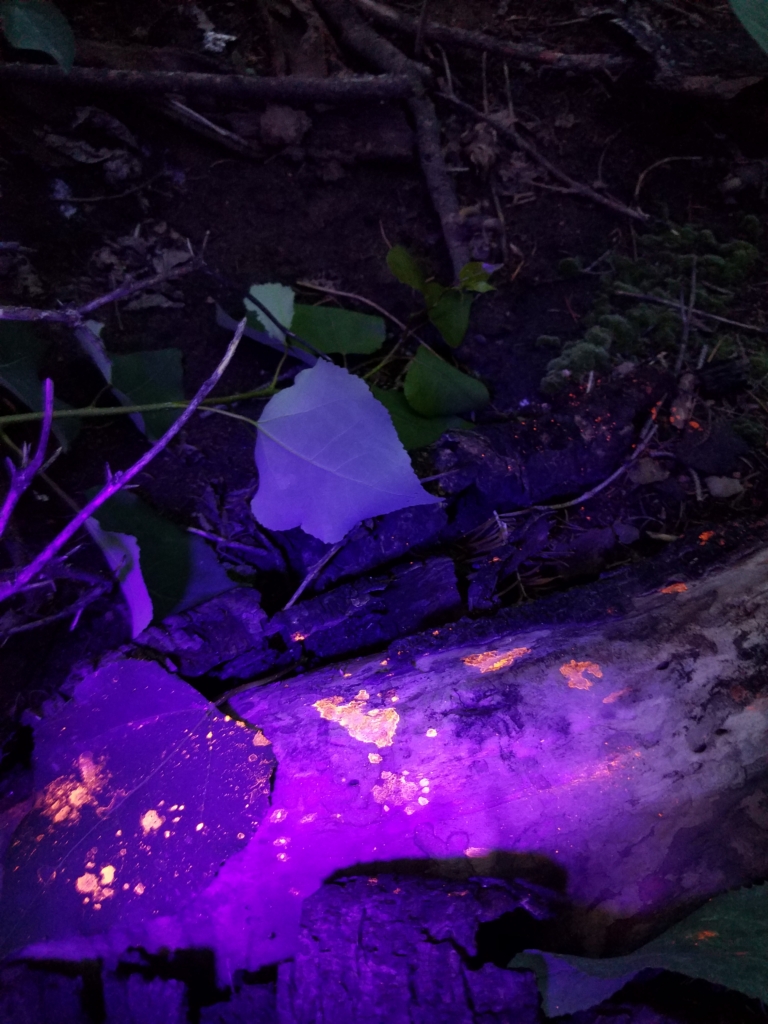
I often used the same animal on multiple occasions, only moving it in a different 50 meter direction. Each time I recorded the burn severity of the patch over which it was moved. These were unchanged, low, moderate, and severe. The frequency at which I trapped any given individual largely depended on where I needed a larger sample. For example, throughout the study I found many females but few males, and there were far more nests in lower burned areas than in higher burned areas. Plus there is the practical side: some locations were easier to access than others. For those individuals I caught on multiple occasions, I used a different powder color each time to avoid confusing trails. Fortunately it didn’t rain too frequently during the monsoon season that year, though when it did, it washed all powder away and created a clean slate on the landscape. Without rain, the powder could last up to a week in the field and over 24 hours on the animal before it thoroughly groomed itself. Moreover, sometimes the packrats lost their ear tags (they naturally tear their large, floppy ears in the wild as they move through the brush), necessitating an educated guess as to which animals were the same.
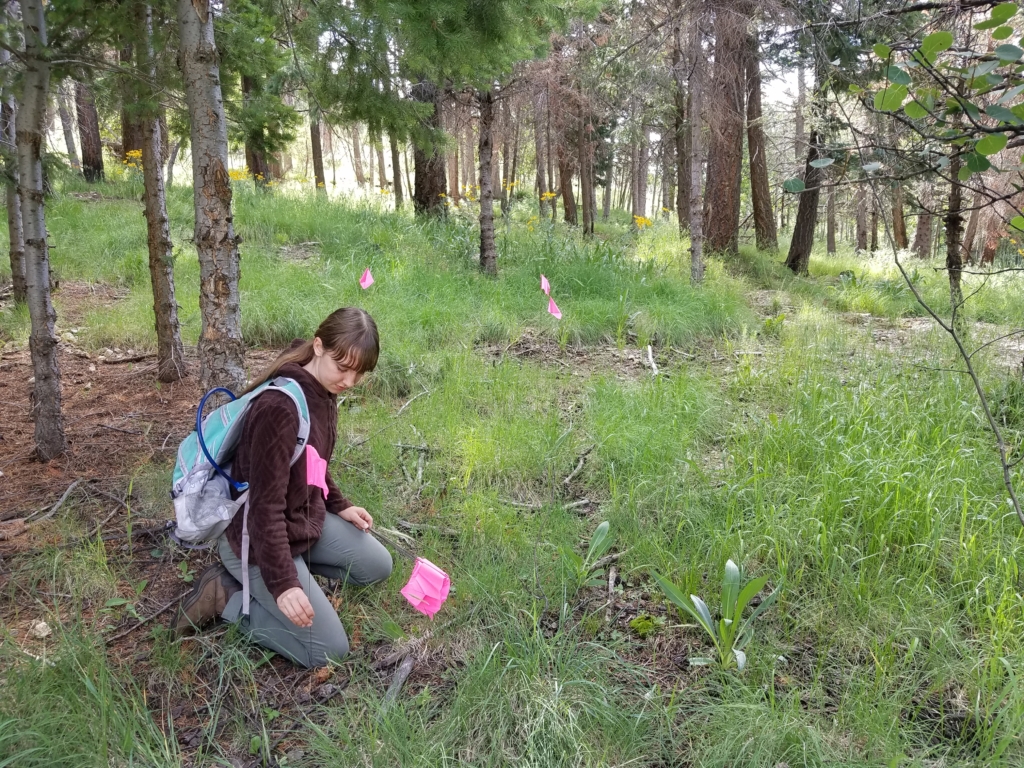
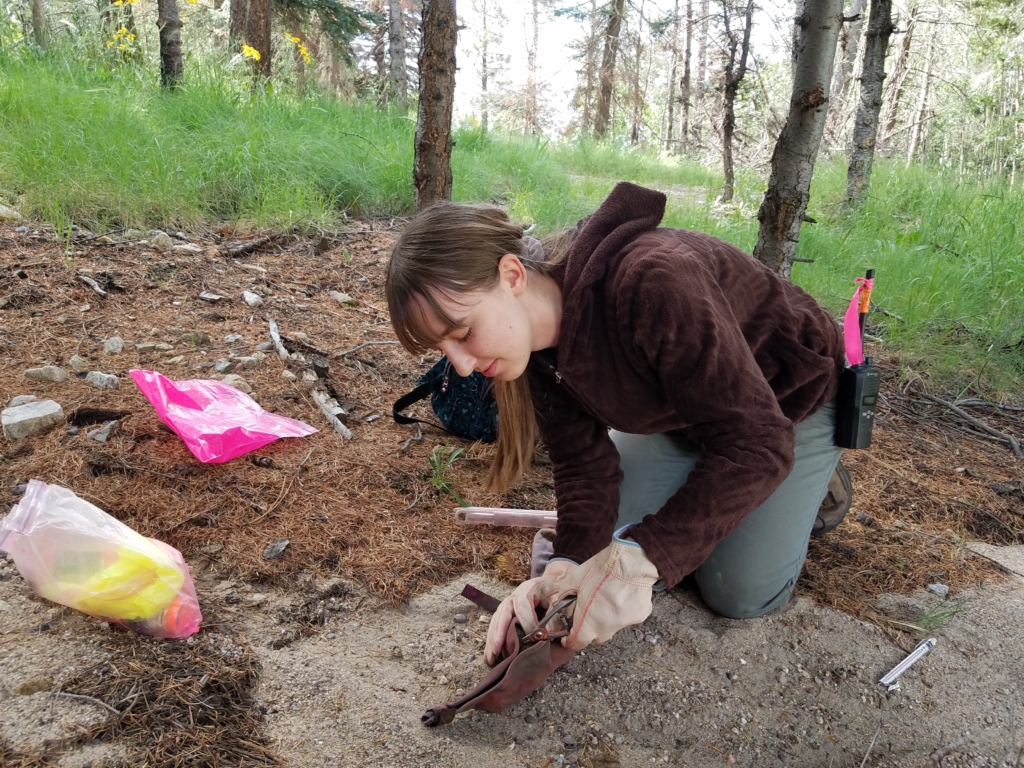
The last part of my methods included setting down 24 random transects of 50 meters, 12 in low/unchanged areas and 12 in severe/moderate areas, and recording vegetation along these transects. The technique allowed me to compare vegetation use of the packrats with general vegetation availability in the environment. This answers the following question: are packrats selecting, avoiding, or using in proportion to availability the five different classes (logs, rocks, bare ground, dense foliage, and branches)?
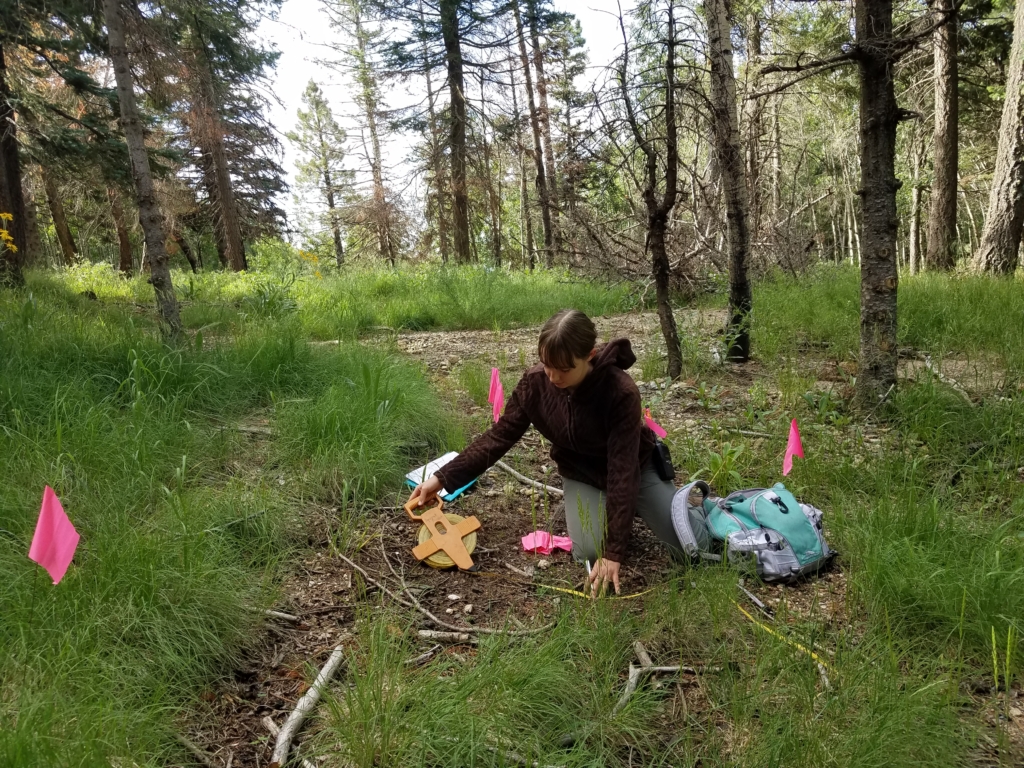
In total, I used 46 trails in analysis where 12 were over moderate or severe burned areas and 34 were over unchanged or low areas. These did not include trails that were too short (<10 m from start to end point), not to mention several packrats escaped before I could powder them! Using the coordinates of the initial release locations for each packrat, as well as the segment lengths and bearings of the trails, I reconstructed the pathways in a GIS and overlaid them on a map of my study site. Then, I was able to determine the coordinates of every turning point from the GIS, which enabled me to calculate several different indices of tortuosity. My supervisor helped me do this in the program R. I compared packrat movement by burn severity, vegetation class, age, sex, and mass, and looked at whether segment lengths along the path varied by any of these factors as well. My results showed that segment lengths were shorter when packrats moved over bare ground, which is likely because they were searching for the nearest log and thus traversed as little bare ground as possible. By contrast, tortuosity did not differ across any of the aforementioned factors, which could be because the animals were moving over unfamiliar ground and trying to get home quickly rather than going about their daily routine (ex. foraging).
My vegetation assessments suggested that generally, logs were selected and dense vegetation (i.e. grasses) was avoided. This is no surprise because logs provide for a quick, efficient means of travel for small mammals (like highways!). Contrarily, dense brush creates a lot of noise when the rodents move through, potentially alerting a hungry owl to a midnight snack.
At this point folks wonder: what are the implications of a study like this? Why is it important? As mentioned earlier, animal movement is understudied in the field of disturbance ecology. We know much about how species abundances change before and after a disturbance such as fire, but what about movement? Movement tells us about behavior, which in turn tells us about how vulnerable an animal might be to predation risk or how likely it is to find a mate. It tells us about the ability of young individuals to disperse from their nests, or their ability to find food as reflected via resource availability. These things cannot be measured from changes in community composition alone.
I continued my study into the school year before the winter, at which point snow covered the mountain and made fieldwork impractical. Yet the memories I hold from this project are dear to me. Not only are they a highlight from my senior year, but I have so many cool stories to tell! I ran into a bear on three separate occasions (one was a cub!!!), took an excursion to Riggs Flat Lake with my companions one afternoon at the top of the mountain, and admired the stars at night. One could clearly see the silhouettes of the trees, and I learned quite a bit about how much is visible during a full moon. Many would feel uncomfortable at the prospect of sitting in the middle of nowhere at 1 in the morning all by themselves, but I must admit there was a profound beauty in those moments. At times I switched off all my lights to simply enjoy the night and listen to its sounds. Upon moving on, I would frequently see that pair of glowing eyes in the distance that was nothing more than a deer passing through (if it’s not a deer, it’s either a skunk, fox, or tiny spider eyes 😉). Being so far from civilization was amazing, and safety was not a concern as I had a radio on me at all times should something happen. Plus sunrises were incredible!
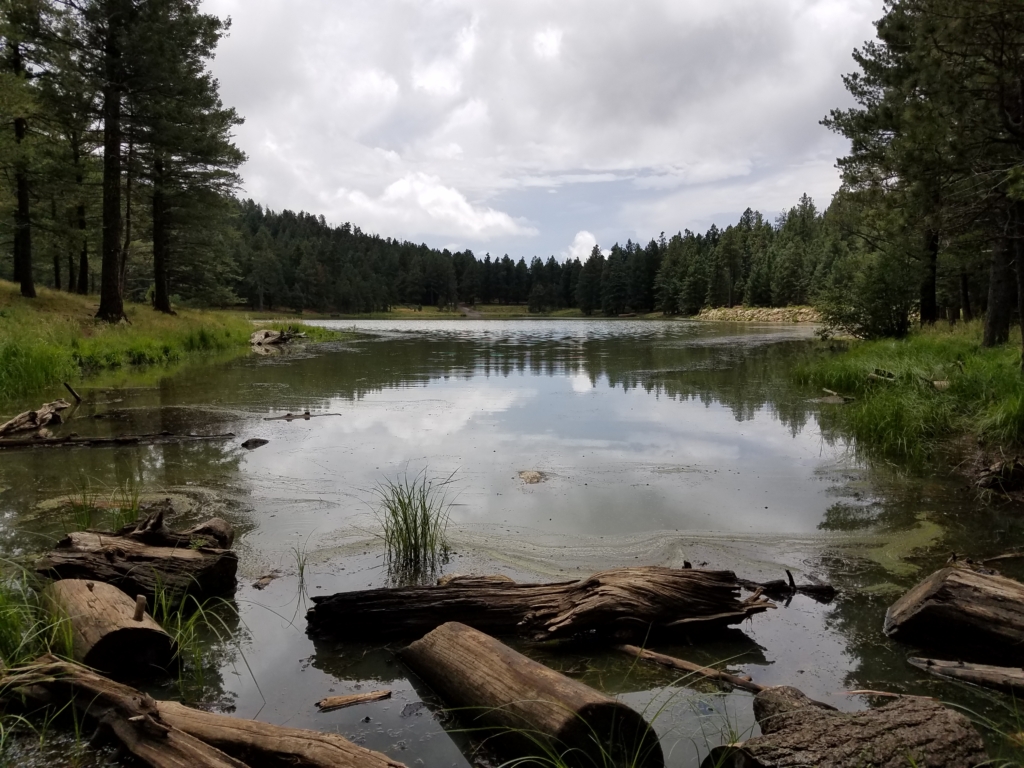
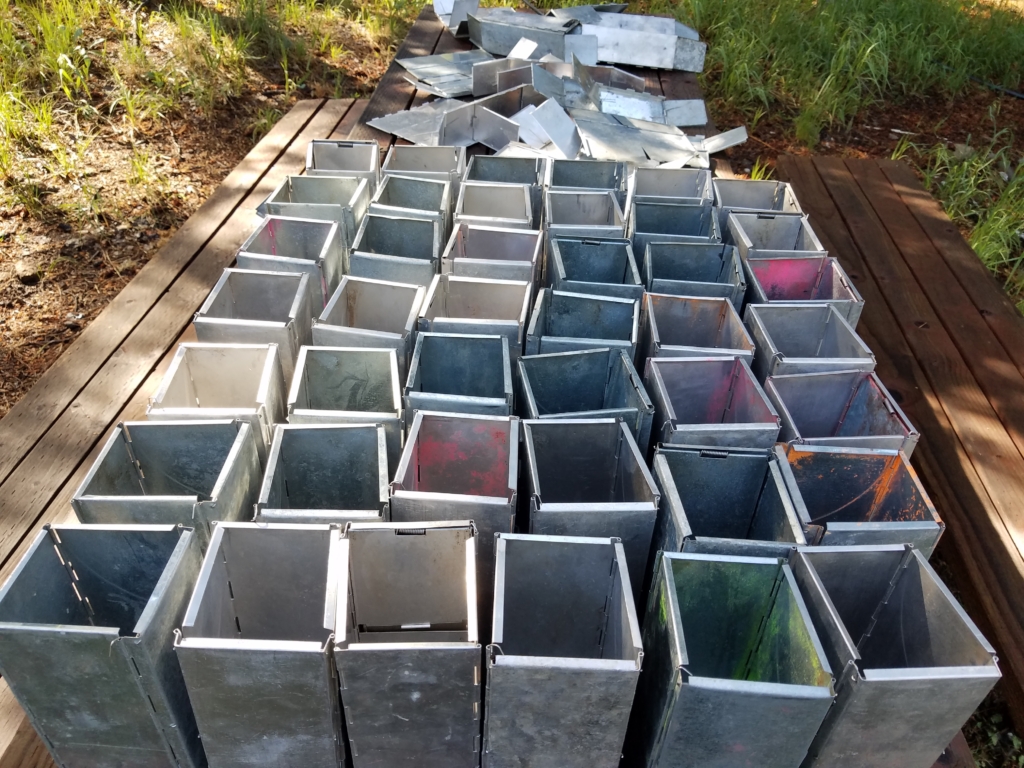
Perhaps one of the most rewarding aspects of the project was seeing the endangered Mt. Graham red squirrels (see my post Undergraduate Research Assistant). They are filled with personality, and were a much-needed source of company as I worked mostly solo all summer.
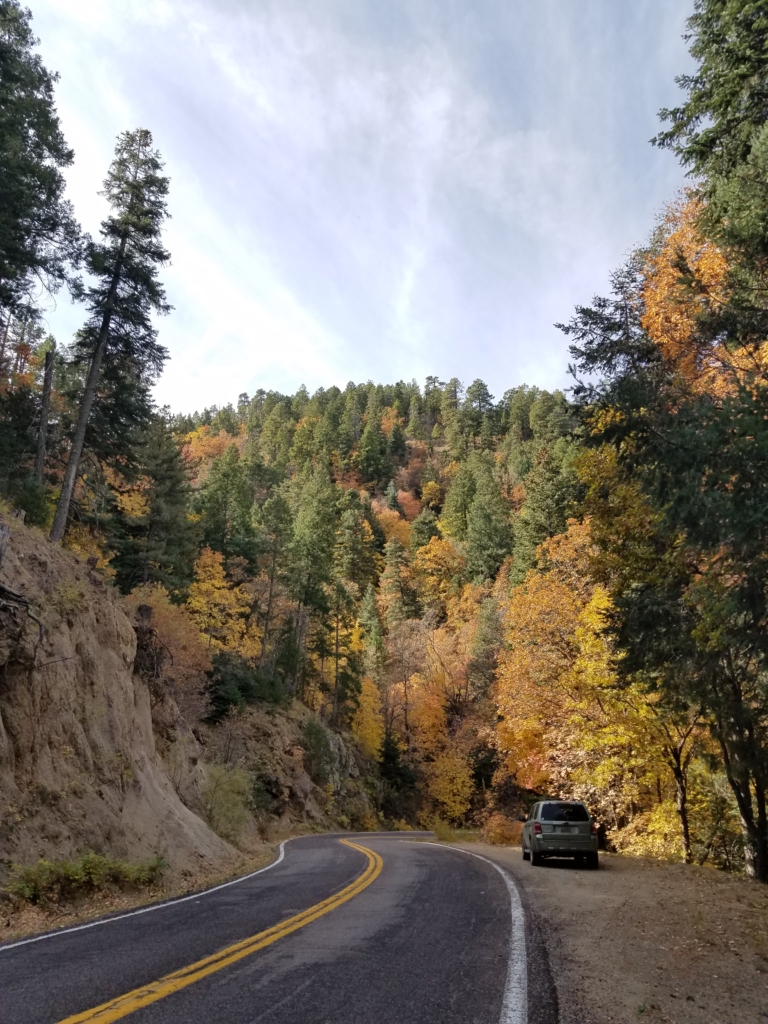
A few final notes: my research was featured in the Arizona Daily Star newspaper!! UBRP requires its students to write a press release on their work, and mine was accepted with my mentor’s approval. It was also accepted at The Daily Wildcat, the University of Arizona’s student newspaper. Then I wrote another article on my work for the public, featured in the 2020 winter newsletter of the Arizona Chapter of The Wildlife Society. Best of all, though, was an honorarium I received from the American Society of Mammalogists (ASM). Only two undergraduates in the U.S. receive this honor per year, and it includes a $1,200 monetary award together with the opportunity to present one’s research at the society’s annual meeting. Unfortunately the conference was cancelled in 2020 because of the coronavirus pandemic, though I was allowed to return in 2021 to give my presentation. The University of Arizona’s School of Natural Resources and the Environment also wrote an article about my award that was posted to the department’s front page. Lastly, before the coronavirus pandemic, I was able to give two poster presentations. One was during UBRP’s 31st Annual Conference at the university, and the second was at the Joint Annual Meeting (JAM) of the AZ/NM Chapters of the American Fisheries Society and The Wildlife Society in Prescott, Arizona. To top it off, I gave my first professional oral presentation at The Wildlife Society annual meeting in the fall of 2020! Albeit virtual, but nevertheless a milestone for me. Good times! Below is also the link to the peer-reviewed publication resulting from this research.
Link to Peer-Reviewed Publication
